Tissue-specific abundance of interferon-gamma drives regulatory T cells to restrain DC1-mediated priming of cytotoxic T cells against lung cancer
- PMID: 36736322
- PMCID: PMC10880816
- DOI: 10.1016/j.immuni.2023.01.010
Tissue-specific abundance of interferon-gamma drives regulatory T cells to restrain DC1-mediated priming of cytotoxic T cells against lung cancer
Abstract
Local environmental factors influence CD8+ T cell priming in lymph nodes (LNs). Here, we sought to understand how factors unique to the tumor-draining mediastinal LN (mLN) impact CD8+ T cell responses toward lung cancer. Type 1 conventional dendritic cells (DC1s) showed a mLN-specific failure to induce robust cytotoxic T cells responses. Using regulatory T (Treg) cell depletion strategies, we found that Treg cells suppressed DC1s in a spatially coordinated manner within tissue-specific microniches within the mLN. Treg cell suppression required MHC II-dependent contact between DC1s and Treg cells. Elevated levels of IFN-γ drove differentiation Treg cells into Th1-like effector Treg cells in the mLN. In patients with cancer, Treg cell Th1 polarization, but not CD8+/Treg cell ratios, correlated with poor responses to checkpoint blockade immunotherapy. Thus, IFN-γ in the mLN skews Treg cells to be Th1-like effector Treg cells, driving their close interaction with DC1s and subsequent suppression of cytotoxic T cell responses.
Keywords: T cell dysfunction; T cell priming; Th1-like effector regulatory T cells; anti-tumor immunity; cross-presenting dendritic cells; cytotoxic T cells; interferon-gamma; non-small cell lung cancer; regulatory T cells; tissue-specific immunity.
Copyright © 2023 Elsevier Inc. All rights reserved.
Conflict of interest statement
Declaration of interests S.S. is a SAB member for Related Sciences, Arcus Biosciences, Ankyra Therapeutics, and Venn Therapeutics. S.S. is a co-founder of Danger Bio. S.S. is a consultant for TAKEDA, Merck, Tango Therapeutics, and Ribon Therapeutics and receives funding for unrelated projects from Leap Therapeutics. J.C.L. has interests in Sunflower Therapeutics PBC, Pfizer, Honeycomb Biotechnologies, OneCyte Biotechnologies, SQZ Biotechnologies, Alloy Therapeutics, QuantumCyte, Amgen, and Repligen. S.S. and J.C.L.’s interests are reviewed and managed under MIT’s policies for potential conflicts of interest. J.C.L. receives sponsored research support at MIT from Amgen, the Bill & Melinda Gates Foundation, Biogen, Pfizer, Roche, Takeda, and Sanofi.
Figures
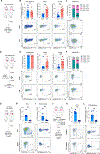

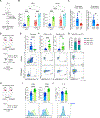
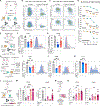
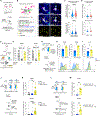

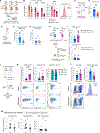
Comment in
-
Th1-like Treg cells are dressed to suppress anti-tumor immunity.Immunity. 2023 Jul 11;56(7):1437-1439. doi: 10.1016/j.immuni.2023.06.014. Immunity. 2023. PMID: 37437535 Free PMC article.
-
Of tenants and nomads: The faces of memory T cells.Immunity. 2023 Jul 11;56(7):1439-1442. doi: 10.1016/j.immuni.2023.06.011. Immunity. 2023. PMID: 37437536
References
-
- Hildner K, Edelson BT, Purtha WE, Diamond M, Matsushita H, Kohyama M, Calderon B, Schraml BU, Unanue ER, Diamond MS, et al. (2008). Batf3 deficiency reveals a critical role for CD8alpha+ dendritic cells in cytotoxic T cell immunity. Science 322, 1097–1100. 10.1126/science.1164206. - DOI - PMC - PubMed
-
- Broz ML, Binnewies M, Boldajipour B, Nelson AE, Pollack JL, Erle DJ, Barczak A, Rosenblum MD, Daud A, Barber DL, et al. (2014). Dissecting the Tumor Myeloid Compartment Reveals Rare Activating Antigen-Presenting Cells Critical for T Cell Immunity. Cancer Cell 26, 938. 10.1016/j.ccell.2014.11.010. - DOI - PubMed
Publication types
MeSH terms
Substances
Grants and funding
LinkOut - more resources
Full Text Sources
Medical
Molecular Biology Databases
Research Materials

